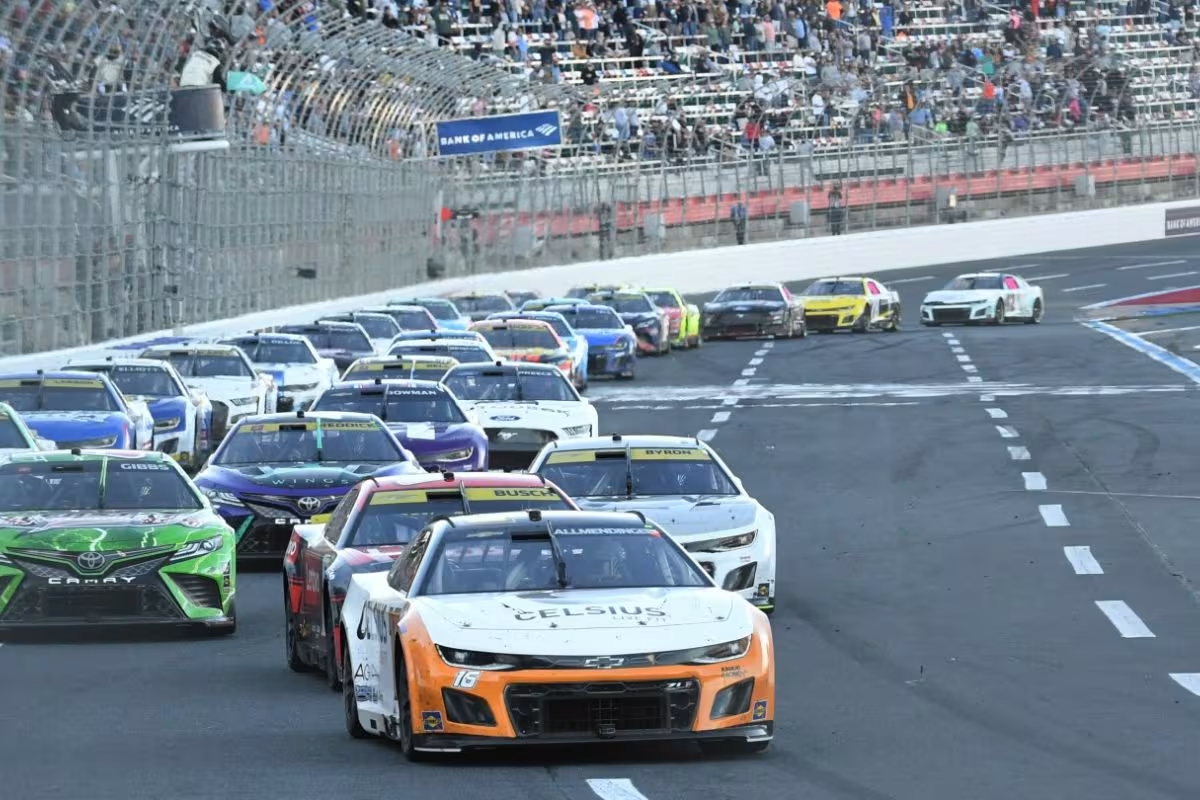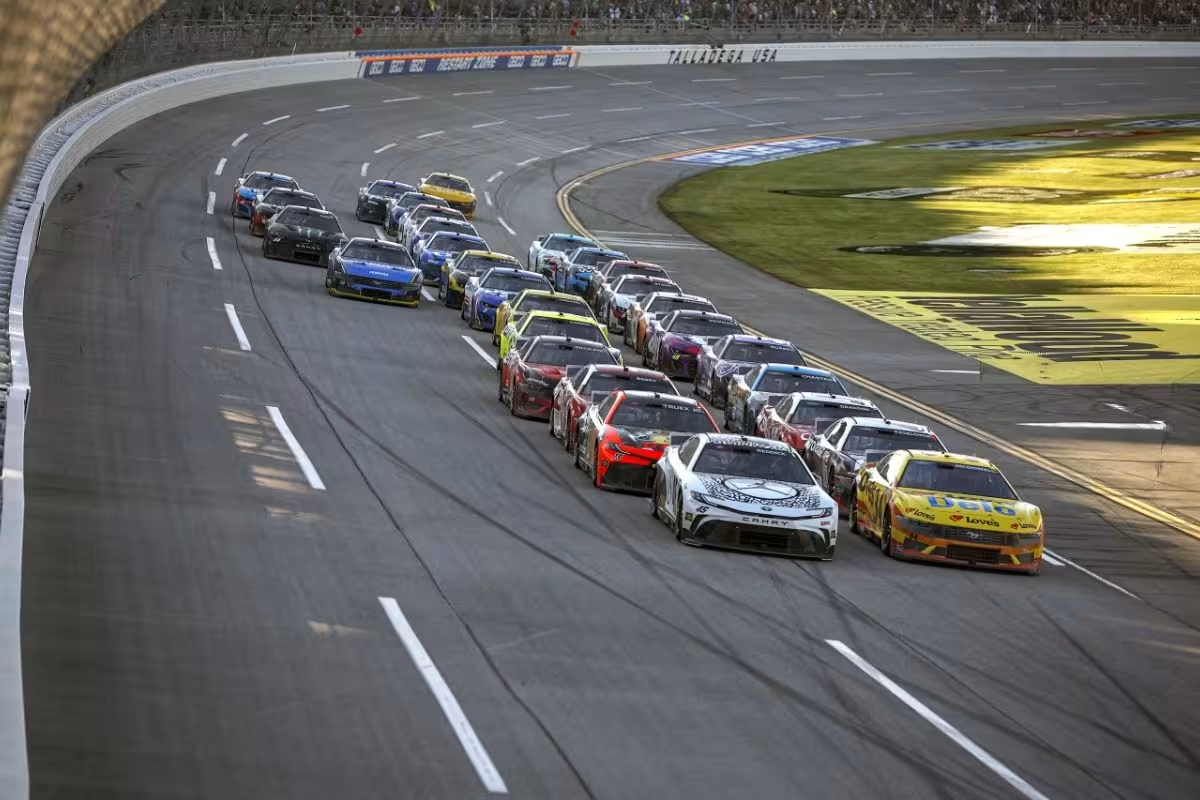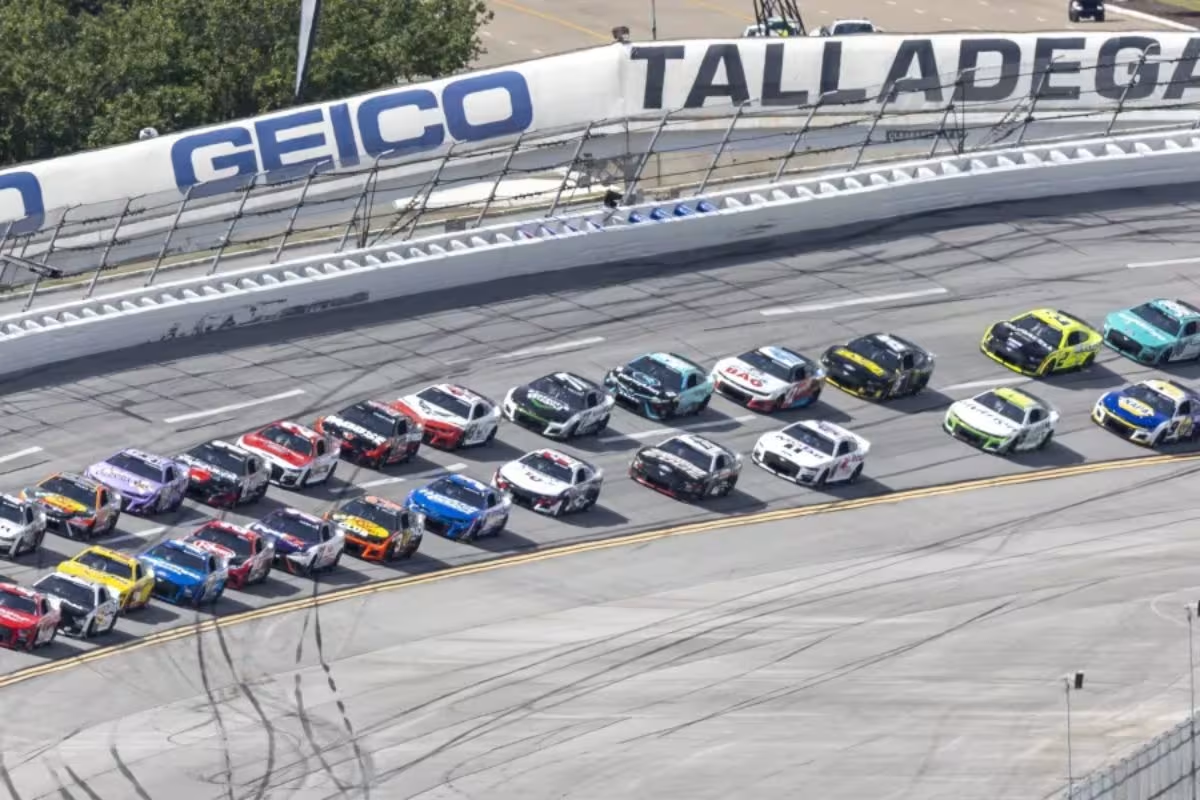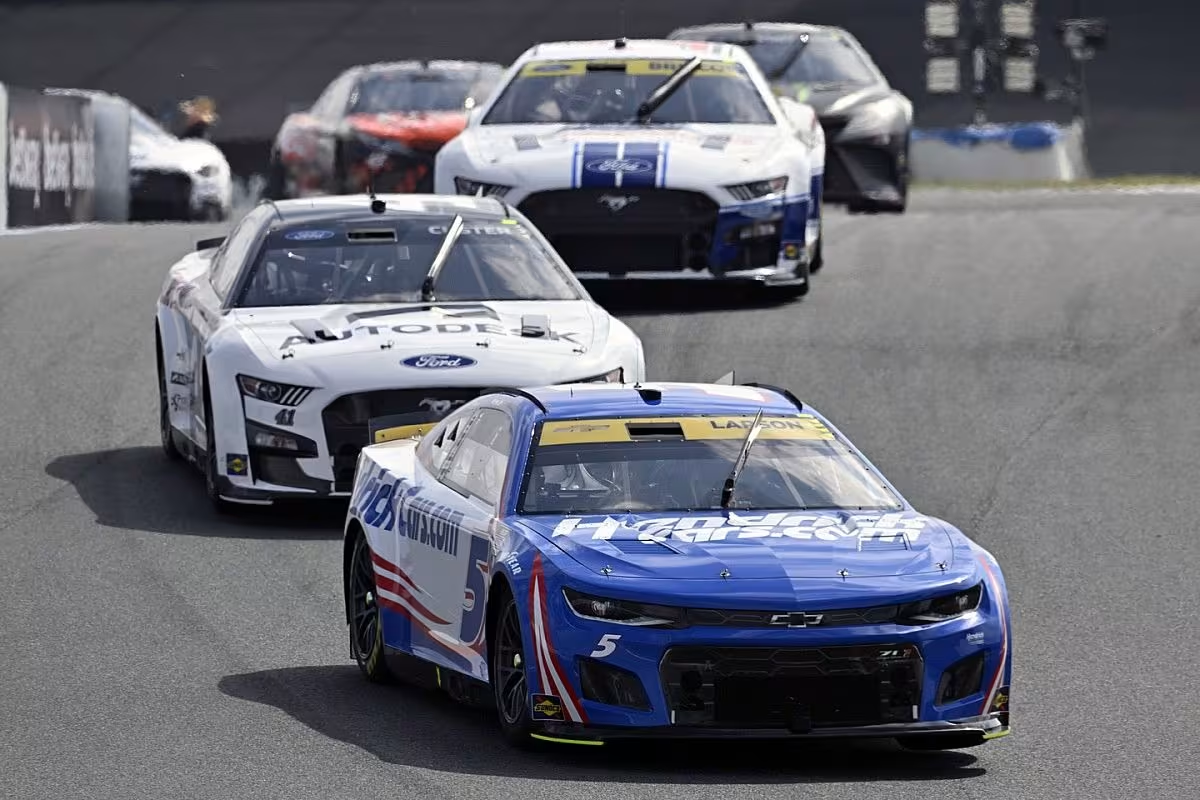NASCAR Forced to Clean Up DVP Mess: NASCAR recently addressed growing frustrations by clarifying its Damage Vehicle Policy (DVP) ahead of the season’s final races. After the uproar following the YellaWood 500, where some drivers were treated differently under the same rules, fans and teams demanded answers. NASCAR’s new clarification aims to ensure fairness and consistency, but many are still left wondering if this will truly fix the problem.
Key Highlights
- NASCAR’s recent DVP clarification aims to standardize enforcement during championship races, addressing prior inconsistencies that frustrated fans and teams alike.
- The updated policy allows for a seven-minute repair timeframe, giving teams a clearer window to assess and fix damage.
- Stakeholders emphasize the importance of transparent communication to enhance understanding of rules that affect race outcomes and competitive integrity.
- Fans are calling for a simplification of DVP rules due to their complexity, seeking a more straightforward approach to enhance engagement.
- Ongoing evaluation of NASCAR policies is crucial for restoring trust among fans and ensuring equitable treatment of all drivers in future events.
NASCAR Faces Accusations of Double Standards Over DVP Enforcement
In the wake of recent events at the 2024 YellaWood 500, NASCAR finds itself at the center of controversy regarding its enforcement of the Damage Vehicle Policy (DVP). The aftermath of a 28-car wreck has ignited accusations of double standards, as the sanctioning body’s inconsistent application of the DVP raises questions about fairness and transparency.
While title contenders Chase Elliott and Chase Briscoe were permitted to return to the pits for repairs, their circumstances sharply contrasted with those faced by Ryan Blaney and Josh Berry earlier this season, who were denied similar allowances under ostensibly comparable conditions.
The perceived inconsistency undermines the integrity of NASCAR’s regulatory framework and has led to widespread criticism from fans and analysts alike. Such discrepancies suggest a troubling precedent where elite drivers may receive preferential treatment, nurturing an environment of distrust among competitors.
Furthermore, the implications of these actions extend beyond the immediate context of a single race. They threaten to erode the trust and respect that drivers and teams have for the authority of NASCAR.
NASCAR Clarifies DVP Rules Ahead of Final Stretch of the Season
As the NASCAR Cup Series approaches its final five races, the sanctioning body has taken proactive steps to clarify its Damage Vehicle Policy (DVP) in the midst of recent controversies. This clarification, resulting from a meeting with Cup Series crew chiefs, aligns the DVP guidelines with the established protocol witnessed during the recent Talladega Superspeedway event.
The key aspect of the updated policy is that if a vehicle suffers from flattened tires yet appears capable of continuing, it will be towed back to its pit stall. This allows teams the opportunity to change tires and assess any potential damage within the designated seven-minute repair timeframe. This change is particularly important as it addresses the balance between competitive integrity and the need for teams to optimize their performance during vital end-of-season races.
Furthermore, this clarification seeks to mitigate confusion and frustration among teams and fans alike, ensuring a consistent application of the rules as the championship approaches. As teams gear up for the final stretch, understanding these DVP guidelines is essential for strategizing repairs and managing race dynamics effectively.
Talladega Controversy Prompts Policy Reassessment
The recent incidents at Talladega have cast a spotlight on the inconsistencies within NASCAR’s Damage Vehicle Policy (DVP), prompting a reassessment of how the rules are applied in critical race scenarios.
The case of Josh Berry, whose No. 4 Ford Mustang was eliminated from the 2024 Hollywood Casino 400 at Kansas Speedway due to a minor collision, exemplifies the puzzling nature of DVP enforcement. Despite minimal damage, Berry was unable to receive necessary repairs, as he could not continue racing after the incident. This strict adherence to the DVP at Kansas sharply contrasts with NASCAR’s more lenient approach at Talladega.
This inconsistency raises fundamental questions about the rationale behind DVP guidelines and the criteria that influence decision-making during races. The apparent discretionary application of the rules not only impacts drivers’ standings but also challenges the integrity of the competitive environment NASCAR aims to maintain.
As the season progresses, NASCAR must address these issues head-on, providing a transparent framework that allows for consistent decision-making, regardless of the stakes involved. Without such measures, the credibility of the DVP and, by extension, the sport itself may come into jeopardy.
NASCAR’s Response and Concerns Over Rule Enforcement
Amid the swirling debates regarding the enforcement of NASCAR’s Damage Vehicle Policy (DVP), stakeholders are keenly aware of the need for a coherent response from the organization. The recent controversies surrounding rule application highlight the crucial requirement for consistency in enforcement. Chris Gabehart, crew chief for Denny Hamlin, emphasized this need, stating that clarity in rule application is paramount.
“It’s stated that if you’re deemed in an incident and you can’t drive back to your pit box, you’re out of the race. It doesn’t matter how good or bad that rule is, just like it was at Kansas with Josh Berry, that was the rule and everybody can stomach it and understand it. What is confusing is when that doesn’t happen, no matter if it’s a 40-car wreck, which it was close to that then we can’t finish the race. And boy, that’s an unintended consequence, get it. But from a competitive standpoint, I prefer sticking to the rules.” – Gabehart
NASCAR’s VP, Elton Sawyer, addressed the concerns by reiterating their intent not to penalize competitive cars unnecessarily. While Sawyer’s remarks aimed to reassure stakeholders, they also revealed an underlying tension regarding the subjectivity of the enforcement process. This duality raises questions about the reliability of the DVP, particularly when the definition of “good” cars can be ambiguous.
“On the heels of last week, our goal is to never put good cars out of the race, Last week after we looked at we may have made a different call. As we came into Talladega this week, we wanted to make sure we air on the side of the competitors.” – Sawyer
As NASCAR navigates these complex waters, the responses must align with the expectations of its teams and fans to maintain the sport’s integrity.
Fan Reactions and Call for Transparency in DVP Application
Fan reactions to NASCAR’s recent clarification of the Damage Vehicle Policy (DVP) have highlighted a growing demand for transparency and consistency in rule enforcement. Following the controversial events at the 2024 YellaWood 500, fans expressed frustration, questioning the policy’s retroactive nature and its perceived lack of foresight. Many argue that clearer guidelines would improve the competitive integrity of the sport.
“Man they should have just done this before Talladega and avoided the entire controversy that didn’t need to happen.” – fans’ reaction
Chase Elliott’s remarks further emphasize the need for thoughtful policy implementation, as his experience with flat tires left him stranded and frustrated.
“This is honestly comical that we’ve created this right here, Everybody’s just spinning their wheels, turning in circles, can’t go anywhere. Stuck in the grass. Stuck on the asphalt.”- Elliott
Critics repeatedly voiced their concerns, suggesting that NASCAR’s ad-hoc approach undermines the trust of its fanbase. One fan even proposed scrapping the DVP altogether, citing its complexity as a major barrier to understanding.
“Lol unilateral rule changes. What a clown show.”
“Can we just go back to the old days of going to the garage for repairs and be done with it? The DVP was an interesting policy when first implemented but it has only gotten more convoluted as time has gone on.”- fans’ reaction
The outcry for clarity indicates a crucial moment for NASCAR in addressing its rules and regulations. A consistent application of the DVP, coupled with transparent communication, could restore faith among fans and drivers.
News in Brief: NASCAR Forced to Clean Up DVP Mess
The recent clarification of NASCAR’s Damage Vehicle Policy has sparked important debate among stakeholders, revealing concerns regarding transparency and consistency in rule enforcement. As the season approaches its ending, the implications of these changes on competitive integrity remain to be seen. The ongoing examination from fans highlights the necessity for NASCAR to cultivate trust and guarantee fair application of regulations.
ALSO READ: 23XI and FRM Lawsuit Hearing Postponed Signals Approaching Crisis for NASCAR




